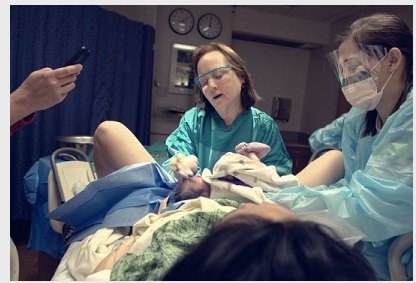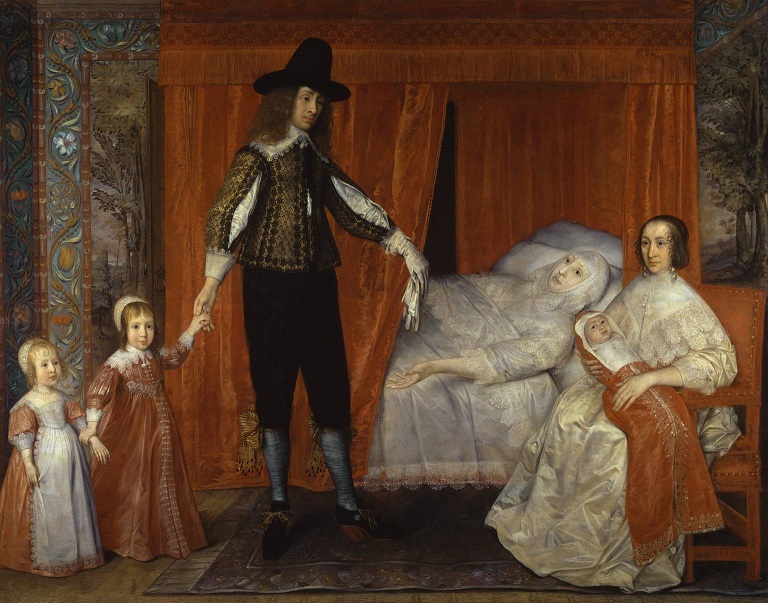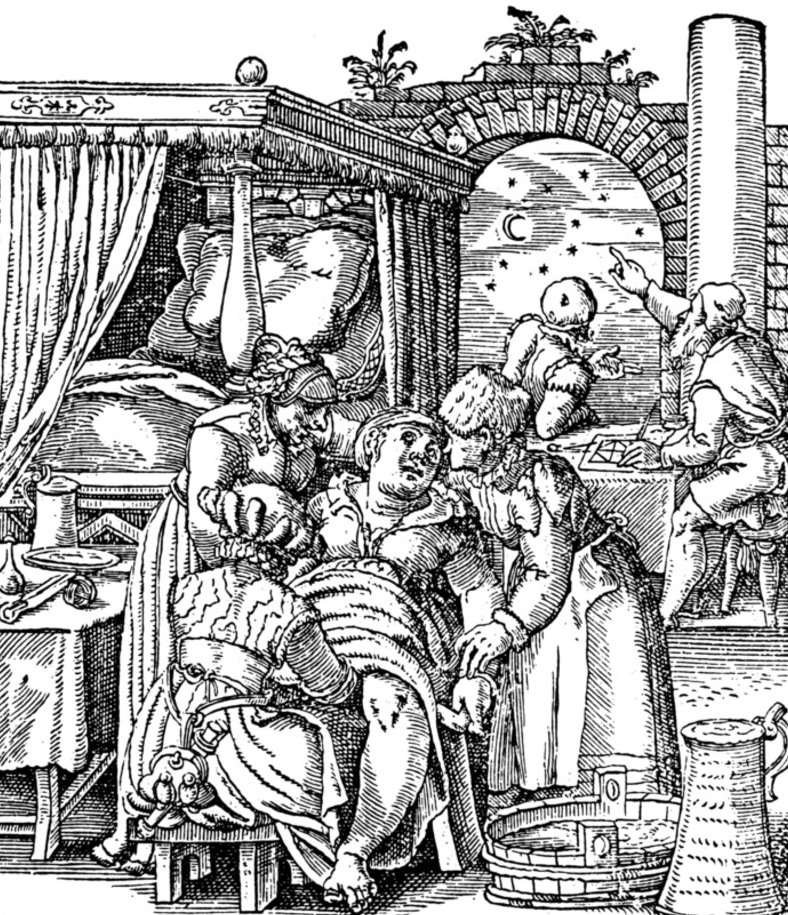
Birth

Introduction
 The
sources on these this webpage will give you some information about
childbirth in Tudor and Stuart times.
The
sources on these this webpage will give you some information about
childbirth in Tudor and Stuart times.
This webpage is the first of a series of five webpages which look in detail at the lives of women in the Early Modern era.
Giving birth today; an epidural anaesthetic means that the birth is pain-free.
A midwife oversees the delivery, and doctors and emergency medical staff
are on standby if needed.
After you have studied this webpage, answer the question sheet by clicking on the 'Time to Work' icon at the top of the page.
Links:
The following websites will help you research further:
Childbirth:
• Tudor childbirth
![]() - both rather difficult
- both rather difficult
1 A Matter for Prayer
A prayer written by Elizabeth Mordaunt after the birth of her son John in 1659.
My God and my Lord, my defender and protector, I most humbly give you my thanks for Thy mercy ... and my safe delivery from the pain and peril of childbirth.
2 A Broken Heart
Sir William Brownlow wrote this after the death of his fifteenth child, at the age of nine months. Sir William's first son was born in June 1626, but died four months later. He had 18 more children during the next 22 years; only two sons and four daughters survived.
I was at ease, but now God has broken me apart and shaken me to pieces.
3 A Deathbed Scene
Sir Richard Saltonstall brings his children to say goodbye to their mother, who is dying after the birth of the baby. She points to the children, giving him the responsibility of looking after them. This picture was painted c.1637.

4 A Childbirth Scene ... complete with midwives and astologers
This high-quality woodcut is by German illustrator Jobst Amman for The Midwife Book, written in 1554 by German obstetrician Jakob Rueff; it has been described as 'as one of the best illustrated medical books of the sixteenth century'.
